What Is the Average Cycling Speed and How to Increase It
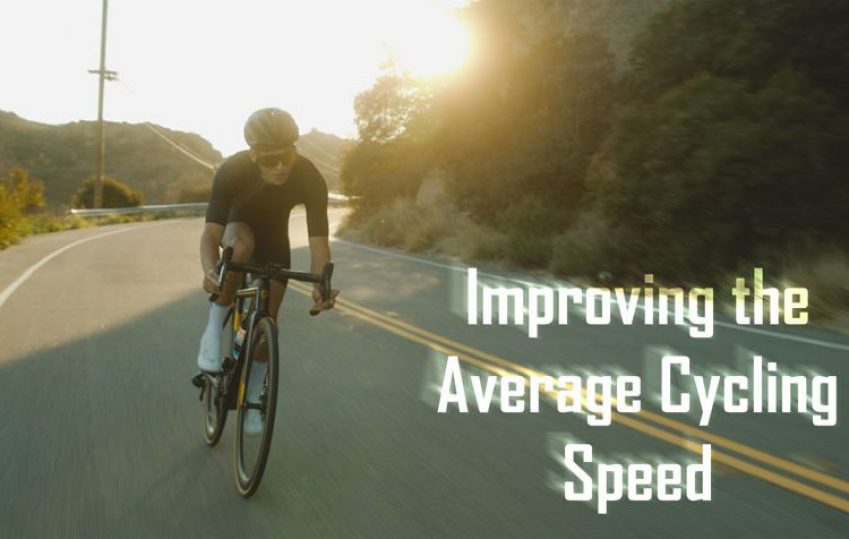
Many cyclists want to raise their average speed with each ride they take, yet most end up maintaining a constant average for various reasons, typically because of a fixed routine and habitual pacing. Just practice alone may not be the optimal way to improve average speed for a cyclist, as many constants remain unchanged.
To achieve this, not only must you break the norm and get out of your comfort zone but also consider several other factors. Tweaking your bicycle, changing your gear, and altering your diet can all improve overall performance and are worth taking some time to work on.
As much as the path remains the same, no two rides can be the same because of external factors that affect the ride. Likewise, the same is true for cyclists as they share a common goal of improving their average speed but ride for different reasons and in different ways.
Average Cycling Speeds Based on Riders’ Fitness Levels
Average riding speed purely depends on the level of expertise, climatic conditions, goals, and bicycle type. To best understand the average pace, we need to consider multiple possibilities. Speed is of the essence in a race, but it may not be the same for someone taking up recreational cycling or riding to commute.
Level 1: Beginners
I remember my first days picking up cycling—sore muscles, no stamina, and the urge to clock the speeds of the cyclists I idolize. If you too are in a similar spot, your days with higher averages shall come too. The first 4 to 6 weeks are the most difficult, but if you make it through this phase, you are on the right track.
The average speed of a beginner biker training to get better should be around 11 mph (17 km/h)—try not to exceed 15 miles per day and ride in intervals. It’s advisable to always use protective gear and get an app or cycling computer to monitor your cycling statistics. This should help you become a better cyclist.
Level 2: Recreational Riders
Recreational cyclists have trained enough to head out on longer trips, without burning out too quickly. Their muscles have adapted to travel longer distances and their bodies can stand the extra work. This is made possible through endurance training and better equipment.
It’s common for recreational riders to average around 15 mph (24 km/h) and higher, depending on ride conditions. To achieve and maintain such speeds, proper practice and consistency are important. For those planning to improve their ride techniques and speed, this is a good benchmark to aim for. However, try to increase the pace slowly and consider upgrading your bike and gear to aid in the progression.
Level 3: Avid Roadies
Avid amateurs have cycled long enough to learn the difficulties of cycling through their experience. They know how to increase and decrease their average speed, depending on their expectations. Clocking over 18 mph (29 km/h) on flat terrain and pavement is no problem for them, as they have put in the required training and are fit enough.
With experience and understanding of how their body reacts to external conditions and forces, avid amateurs maintain consistent hydration and eat snacks throughout the day to keep their energy levels up and maintain a high average road bike speed.
Level Max: Tour de France Riders
Tour de France Cyclists are considered the Gods of the cycling world and we all dream to be like them. The level of competition and professionalism they display in a multi-terrain setting is impressive. They have dedicated their entire life to cycling and made it their lifelong goal to break records.
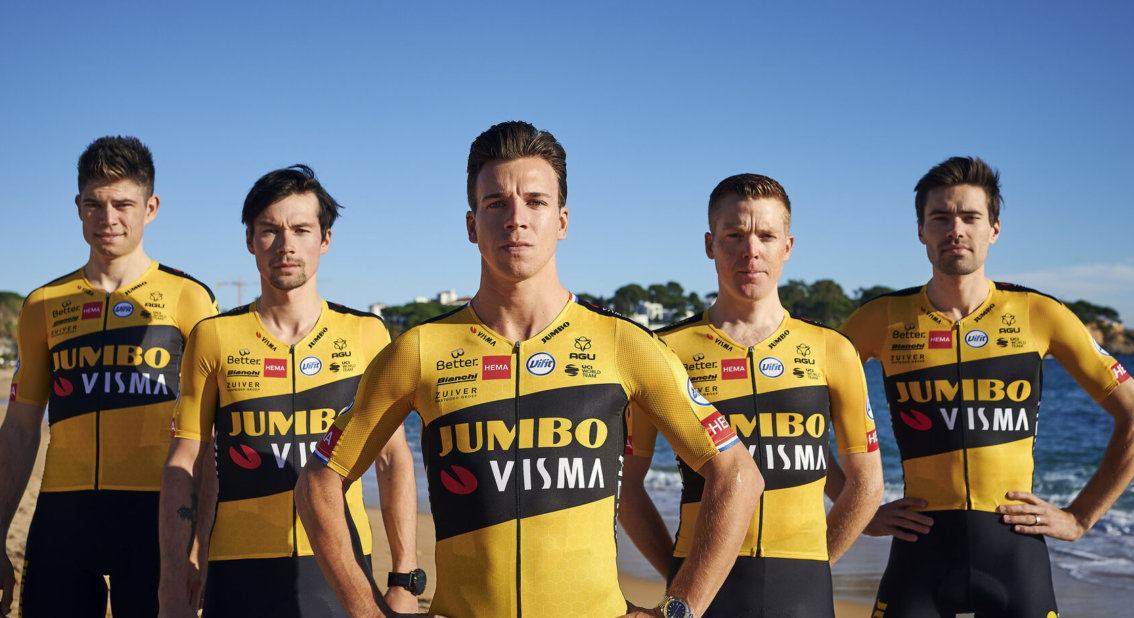
In fact, before we talk speeds, the average Tour de France competitor consumes the equivalent of 30 sandwiches, has a resting heart rate of 42 bpm, and drinks up to a dozen mixed drinks per day. Even with all the difficulty, top riders average an impressive 22-24 mph (35-38 km/h), thanks to a professional, well-monitored physique and intense training.
11 Ways to Improve Your Average Speed
Like everything else in life, a consistent improvement in average speed is important but it gets to a point where this maxes out. Here are some recommendations on how you can improve your average speed and make cycling a more fun activity.
1. Ride with the Headwind
Just like pilots, cyclists have a love-hate relationship with the wind as it can make or break their ride. Headwinds increase the drag faced by the rider and the bike—it almost feels as though someone is pulling you back. Cyclists feel the direct effect of headwinds on long rides because of the wind resistance, thus covering a shorter distance than they would have without it.
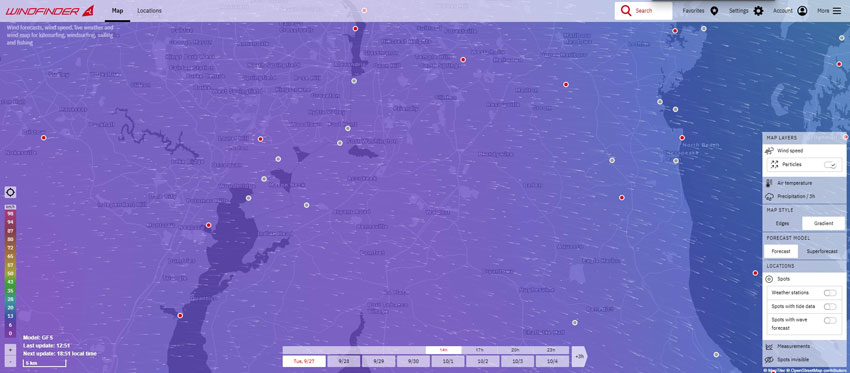
Websites such as WindFinder.com show you the direction and speed of the wind, so you can easily plan your route.
Avid amateurs have cycled long enough to learn how much wind affects the ride. They know exactly how to increase and decrease their average speed, depending on their expectations. Clocking over 18 mph on flat roads is no problem for them as they have trained hard and long.
In contrast, tailwinds are always a blessing for solo riders as they help improve efficiency and reduce air resistance. Keep in mind that when cycling in a group, tailwinds will reduce the cumulative effects of drafting.
Cross-winds are a nuisance and can throw you off the path without warning. They are especially dangerous while riding on the edge of a cliff or busy highway, as they can rock you from side to side.
Therefore, before your next ride, check out what direction the wind is blowing and choose a route that will allow you to ride with the tailwind.
2. Choose Flatter Routes with Less Incline
As cyclists climb higher, the saturation of oxygen in the environment depletes, thus reducing the energy output. An incline combined with a gain in altitude drains your energy and harms overall performance, lowering your average speed. However, we can argue that to get the advantage of a fast downhill ride, one must first ride up it.
Climbing Tips and Tricks—How to Climb Hills Faster
Riding at sea level is different and less tedious than riding 2,000m above sea level, and climbing also forces cyclists to pedal harder to achieve their desired average speed. Air density and temperature also reduce at high altitudes, increasing the rolling resistance on the tires and resulting in more effort. All these factors combined reduce average speed on inclines.
So if you want to get a faster average on your next ride, choose a route with as little altitude gain as possible. Also, choose a route with few traffic lights and intersections, as these can also lower your average speed.
3. Get the Right Type of Bike
The type of bicycle and wheel-tire combo used has a great impact on average speed. A lightweight and aerodynamic bike will roll faster with less resistance, unlike a heavy bicycle with the wrong tire setup. The choice of material in the construction of a bicycle also has a direct effect on the weight and dynamics.

Aero road bikes and Time-Trial bikes are the fastest types of bikes. However, for most riders, a standard road bike will suffice.
Mountain bike setups are the slowest with a 10-12mph average speed compared to road bikes that clock twice that. However, because of a technology change, e-bike cyclists can effortlessly achieve a higher average momentum compared to traditional bikes.
Also, it is prudent for cyclists to pair themselves with a bicycle that matches their height, fit, and terrain type. It’s best to take your time when selecting a cycle to ensure near-perfect equipment.
With this in mind, if you want to ride as fast as possible, it’s best to get a time trial bike, racing or aero road bike type, or at least an endurance road bike. Hybrid bikes are faster than mountain bikes (MTB), but not as fast as road bikes.
But the right type of bike also depends on the surface you’re riding. For example, gravel bikes would be the fastest choice if you’re frequently riding on gravel trails, while a mountain bike is the fastest for off-road riding.
4. Consider Your Age and Fitness
Cycling is by far one of the best ways to maintain a healthy lifestyle and the more you cycle, the more fit you get, subsequently achieving a higher average speed.
However, age also plays a very important role in determining the average speed that one can clock. Younger, toned cyclists naturally sustain a higher average, while older and less fit people would be lower.
There’s a small physiological decline in our body before we hit 40. Around this age, our VO2 levels start depleting, which is the body’s maximum capacity to use and transport oxygen per minute.
Therefore, you should manage your expectations and goals based on your current age, level of fitness, and riding style. But that doesn’t mean that you shouldn’t try to push yourself slightly over the bar and see where it gets you.
5. Improve Your Braking Efficiency
Inefficient braking is one of the major reasons cyclists have a lower average speed. With every brake, the velocity reduces and slows down the rider. Many times, the main reason for this is because of a lack of confidence, especially around corners and down treacherous paths.
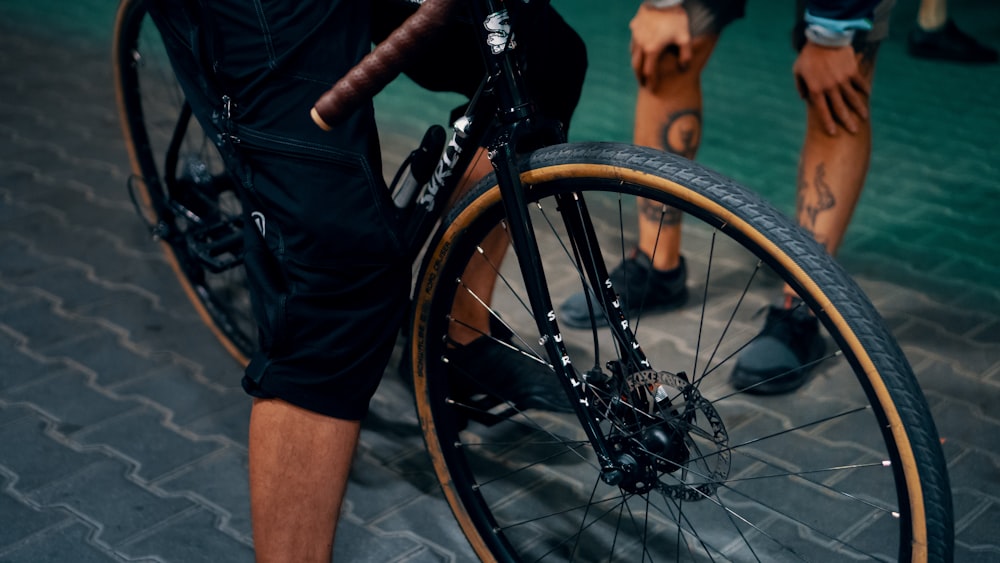
Hydraulic disc brakes are the best you can get to improve your average speed, as you can brake hard and maintain your momentum.
Likewise, taking bends faster helps maintain a higher average compared to slower turns. Less powerful brakes add to the time taken to come to a halt and start moving again. A quicker descent increases the momentum, allowing for a faster ascend on an oscillatory road.
- Related post: All You Need to Know About Disc Brakes
Lack of control over one’s bike also raises the rate of decelerating. This can be because of a wrong configuration or inadequacy of know-how. Modern hydraulic disc brakes are more solid and effective, unlike traditional rubber cable-controlled versions.
So in order to maximize your average speed, make sure to brake hard just before the corner and release the brakes as you exit the corner to maintain and gain maximum speed.
6. Strengthen Your Mental Fortitude
Riders can ride up to where their mind takes them. It can either motivate or demoralize cyclists, affecting their average speed and overall mood. Strong-willed and highly motivated riders will attain a greater average speed compared to riders who are demotivated.
It’s equally as important not to disregard hydration and nutrition on the bike, as this has a direct effect on training intensity and mindset. A healthy mind and body need sufficient water and a balanced diet or it could risk becoming frazzled. By sticking to small nutritional snacks and sips of fluids with hydration salts, the body maintains optimum performance, resulting in a higher average speed.
Remember, your mind will give up much faster than your body, so strengthening your mental fortitude is just as (or even more) important as strengthening your legs.
7. Reap the Benefits of Group Riding
How one rides changes the whole dynamics of the average speed. Solo riders are purely responsible for their own speed but in a group setting, this changes thanks to the drafting effect.

A cycling peloton can maintain much higher average speeds than a solo rider.
Riding with others helps boost spirits and motivates one to move faster. However, if the team has a slow pacer, this could bring everyone down and lower the average speed.
The other beauty of riding in a pack is drafting—a secret used by Tour De France competitors to maintain a higher average speed. It helps the group stay in control of their velocity and determine how their ride shall turn out.
Essential Bike Hand Signals for Group Rides and Commuting
If they decide to push to the best of their ability, they can achieve better results compared to if they slack. Don’t spend too long at the front though as this will burn you out in the long run!
So if you want to show a higher average on your next Strava activity, try to join a group ride and reap the benefits of drafting.
8. Improve Your Drivetrain Efficiency
An inefficient drivetrain generates negative forces that slow the bike down because of resistance. To understand this better, if we take a single-speed bike on a straight, there is minimal friction between the pedal and the tire. However, within a complex drivetrain with several moving components such as derailleurs and bike’s gears, there are several points of friction and overall efficiency reduces.
It’s therefore important to have a good drivetrain setup to minimize external forces that bring down the average speed and help you power along at a consistent pedal rate.
If you want to achieve maximum rotation with minimal effort, you need a well-maintained and high-quality drivetrain. Modern drivetrains like the Pinion gear system and some e-drivetrains come with better components that are much more efficient.
9. Lower Your Bike’s Weight
The overall rig and weight affect average speed and aerodynamic drag. Unbalanced bags and gear create an imbalance in the setup, diverting your attention to correcting the bike. Also, heavier bicycles generate higher inertia, a cyclist’s worst enemy.

A well-weighted bike will, however, accelerate quicker on descents, but the opposite occurs uphill. We recommend a straight-line baggage composition to reduce drag while riding, thus improving the average pace. Heavier bikes naturally require more effort up hills and increase braking distance, making riding more stressful.
However, keep in mind that after a certain point, lowering your bike’s weight provides only marginal gains that are not worth the price. At that point, it might be better to focus on other areas such as your posture and riding in an aero position.
10. Get the Right Clothing and Gear
Your clothing and gear choice can determine how a ride turns out. We prefer Lycra because of its elastic properties and proper fit, unlike jeans and dresses that restrict muscle use.
Also, well-ventilated and well-fitting wear helps reduce the energy needed to cycle and improves aerodynamics. It’s best to avoid heavy and unnecessary items, especially on shorter rides, so pack accordingly and don’t overdo it. You won’t need a jacket in summer, so leave it at home.
It’s generally agreed that cyclists require extra gear on the bike to make their riding easier and more efficient. However, we find it important to pick the right brand and stick to a minimalistic setup. It’s a good idea to use a cycle computer to track your performance and analyze where there is some room for improvement.
11. Dial-Up Your Bike Maintenance

Keep your bike in pristine working condition in order to maximize your pedaling efficiency.
Regular care and cleaning are crucial not only for a good average speed but also for a safe and comfortable ride. Grime and dirt buildup in the chain can increase friction and damage the components of the drivetrain, reducing efficiency. While some modern bike parts are mostly maintenance-free, they still require cleaning to achieve the best performance.
Basic Bike Maintenance for Beginner Cyclists: A Complete Guide to Keep Your Bike Running Smoothly
Therefore, any components requiring replacement should be tended to before any major problems occur. Faulty bearings and brakes can reduce momentum and increase effort, affecting your average speed. Think of it as trying to drive with the handbrake up—there will be a lot of resistance and you’ll need to exert extra energy to overcome it.
Main Factors that Affect the Average Cycling Speed
1. Fitness Level
Overall performance has a massive impact on cycling speed and there are various ways you can improve your performance. Average cycling speed also changes depending on how one rides—solo and group cycling impact this, as the setup is different.
- Evidence shows that downloading popular cycling apps to monitor and optimize riding helps improve performance. It’s good to know how the body responds to various conditions, assisting cyclists to see where they are going wrong. Popular cycling podcasts or your favorite music can also improve motivation levels and effort.
- You can use various techniques to optimize your average riding speed, one of which is to tuck in the elbows and get in a good riding position. This helps minimize wind resistance and improves aerodynamics.
- Breaking routines and trying out new programs can be beneficial in improving average speed. Every cyclist has their own characteristics which affect their performance, ie: habitual braking that reduces momentum.
- As a solo cyclist, you are responsible for your own performance and may find it hard to improve your average speed. If so, it’s recommended that you join a cycling group and see if it helps motivate you to cycle faster.
- More muscle mass can help you produce a higher power output, but it will also weigh you down, so it’s important to find the right balance.
2. Bike and Gear Selection

Aero road bikes with deep-section wheels will significantly improve your average speed but at a high cost.
The combination of bicycle and gear is the deciding factor on how high an average speed one clocks. Selection of the frame, tires, and drivetrain impact how fast the bike goes. You don’t need to break the bank but invest in something quality for a satisfactory average speed.
- A professional cyclist will prefer a lighter bicycle as they have less inertia, allowing for better acceleration which is usually experienced while ascending.
- Tires, wheels, and bike tire pressure are of great importance for a good rolling speed. You should choose your tires according to the terrain type you will cycle on, as it helps improve average cycling speed. Carbon wheels are an excellent choice because of their flexible properties and mass.
- The world of cycling has evolved thanks to technology and you can now purchase specialist equipment to improve your ride. Electronic and manual products make riding much simpler and help you achieve impressive speeds. Bike frame material, dropper posts, and e-drivetrains are all examples of upgrades you could consider to improve your average speed.
- Try to keep gear to the minimum and leave back whatever isn’t necessary to minimize weight and air resistance while cycling. Also, stick to skin-tight clothing as this makes it easier to glide through the air.
3. Overall Health and Age
Your overall health and physique will have a direct effect on your average speed. Heavier and less fit riders burn out faster and will struggle to improve their average speed. To pedal faster, cyclists need to have well-developed cycling muscles and good cardiovascular health. Some cyclists may look fit and healthy from the outside, but organs in their bodies that don’t function well can cause problems.
- If you run out of steam faster, you need to get on a fitness health plan to help boost your body’s strength and ability. Certain gym training aids in building muscle, but it’s a gradual process.
- A healthy diet is also important for the mind and body so you should consider visiting a dietician to know what your body needs more of. Cycling strengthens the heart and is highly effective at improving resting heart rate.
- Underlying conditions can be a hindrance in achieving the results you may be after. They can also be a danger, so try overcoming them first and refrain from pushing too hard. As much as we like high average speeds, safety comes first!
4. Efficient Training Structure

Riding indoors will allow you to maintain a structured training routine no matter the weather outside.
A good cycling training plan is important to maintain a decent average cycling speed and improve overall health. Even just one hour of cycling every second day is a good start to getting fit and in good shape. For the best results, we recommend creating a schedule and sticking to it.
- Good cycling routines help build endurance and promote muscle growth and stamina while reducing the risk of injury. A good routine should include both interval training and long-distance training.
- It’s also good to know when to take a break, as continuously performing one activity can get boring and increase fatigue. A good routine can help make this better while maintaining optimum performance.
- If you have been cycling alone and can’t see any changes, joining a group may be beneficial.
- Make sure to also increase your pedaling cadence, as this can help you use your power more efficiently.
- Power meters can be helpful to track your efforts and increase your FTP (Functional Threshold Power) over time.
5. Weather and Climate Conditions
Weather and climate play a very important role in optimizing average bike speeds, with these external factors affecting your ride performance. For the best results, you’ll find cycling at lower altitudes provides the most pleasant ride. Your blood oxygen saturation reduces the higher you climb above sea level and the atmospheric pressure and temperature also play a role.
- Wear the right clothing depending on the weather – an abrupt rise or drop in body temperature shocks the body and can be harmful.
- Rising elevation also causes a negative effect on the body and overall average speed. Prepare for this by performing intense workouts indoors to condition the body.
- Fitting the right tires according to road conditions can help overcome the struggles, especially in muddy conditions. A normal road setup can cause difficulty on rougher paths.

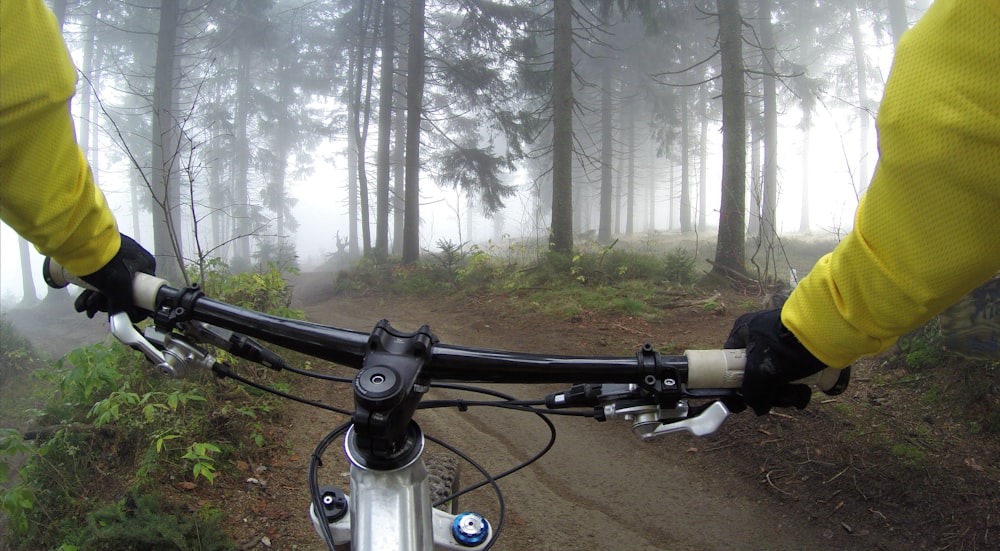

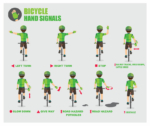



Dear Sam Millers:
Great write-up. Really enjoyed reading it. I knew a lot of the stuff because I’m a doctor. My problem lately has been weird though. I ride the same thirty mile course every day. It’s quite hilly, with 6-7 climbs of 1/2 to 3/4 mile each. My quads are getting big and I tire less every day. But, my average speed for the whole ride is falling from in the 13-14 mph range to now 12.5-12.7. I always push as hard as I can. The wind direction is almost always exactly the same due to geographic factors. So I am at a loss. Is that change in average speeds significant? I’ve thought of switching to a lower gear and a faster cadence. Could that work? I can go 16-17 mph on a flat road. I’ve been riding daily for about eight years since I retired. I’m 69 but have never been in such good condition. Any thoughts?
Hey Craig! Kudos to you for being consistent with your rides!
My guess would be that you’re overtrained, considering you’re riding the same hilly route every day. Thirty miles is not short by any means, especially if it’s hilly. I recommend taking days off at least once or twice a week and resting completely or doing some other activity unrelated to cycling, such as walking or stretching. Try it and see if this helps.
Another potential issue that comes to my mind is that you may need to spice things up a bit by changing your route and challenging your body in a different way. Try to mix it up and do shorter but more explosive intervals on some days, and going for longer but slower rides on other days. Do this for a month or two and then try riding that 30-mile route again—you should feel an improvement.
Another potential reason as to why you’re slower is weight. You mentioned that your quads are getting big, which could mean that you’re putting on muscle and gaining weight (which is great, especially at your age!), but this might be slowing you down when riding uphill.
Hope this helps! Would love to hear what you think!